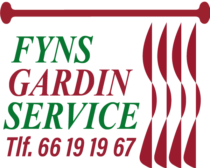Orthostatic high blood pressure, urotrin en chile additionally referred to as postural hypertension, is a condition characterized by an extreme increase in high blood pressure when transitioning from lying down or sitting to standing. This sudden surge in high blood pressure can lead to a range of signs and symptoms and also might present health threats if left neglected. In this write-up, we will explore the reasons, signs and symptoms, and therapy alternatives for orthostatic high blood pressure.
Root Causes Of Orthostatic High Blood Pressure
Several factors can contribute to the development of orthostatic high blood pressure. Recognizing these reasons is vital in order to efficiently take care of and deal with the condition.
1.Age: Orthostatic high blood pressure is a lot more usual in older adults. As we age, our blood vessels come to be less elastic, making it harder for the body to get used to changes in posture.
2.Underlying Medical Issues: Certain clinical problems can add to the development acuflex for hearing loss of orthostatic hypertension. These consist of diabetes mellitus, cardiovascular disease, Parkinson’s illness, and also autonomic nerves problems.
3.Drugs: Some drugs, such as alpha-blockers, beta-blockers, and also diuretics, can interrupt the body’s capability to manage high blood pressure, causing orthostatic high blood pressure as a side effect.
4.Prolonged Bed Relax: Prolonged durations of lying down or sitting can trigger blood to pool in the reduced extremities, leading to a decrease in blood pressure. When we stand up unexpectedly, the body compensates by raising blood pressure, resulting in orthostatic high blood pressure.
5.Volume Exhaustion: Not enough fluid intake or medical problems that cause dehydration can cause a reduction in blood volume, making it harder for the body to preserve stable high blood pressure levels.
Signs of Orthostatic Hypertension
Orthostatic high blood pressure can manifest with various symptoms that might range in extent. Some common signs and symptoms consist of:
- Dizziness or impaired thinking
- Passing out
- Blurred vision
- Headache
- Weakness or exhaustion
- Confusion or problem concentrating
- Nausea
- Lack of breath
It is very important to keep in mind that individuals might experience different mixes of these signs. If you think orthostatic high blood pressure, it is crucial to seek advice from a healthcare professional for an exact diagnosis.
Diagnosis and also Therapy Choices
If you experience symptoms of orthostatic hypertension, a medical care expert will certainly execute a detailed evaluation to identify the underlying cause and develop an appropriate therapy plan. The analysis might entail:
1.Medical History: Your medical professional will ask about your medical history, consisting of any kind of hidden problems, medications, as well as way of life aspects that might add to orthostatic high blood pressure.
2.Health examination: A physical exam, consisting of measurements of high blood pressure in various settings, will be conducted to evaluate your existing high blood pressure levels as well as recognize any kind of problems.
3.Tilt Table Examination: In many cases, a tilt table examination might be advised to validate the medical diagnosis. This test includes resting on a table that is gradually slanted to an upright position while checking your blood pressure as well as heart price.
The treatment plan for orthostatic hypertension will depend upon the underlying cause and also seriousness of the condition. Some common therapy options include:
- Boosting liquid and also salt intake to broaden blood volume
- Gradually changing positions to enable the body to adjust to pose modifications
- Wearing compression stockings to boost blood circulation
- Changing drugs that may be adding to orthostatic high blood pressure
- Participating in routine exercise to boost cardiovascular health and wellness
- Handling hidden medical problems via medicine and also lifestyle changes
Verdict
Orthostatic high blood pressure is a problem that can dramatically affect a person’s day-to-day live if left without treatment. By comprehending the reasons, signs and symptoms, and treatment alternatives for orthostatic high blood pressure, individuals that experience this condition can take positive actions to manage and improve their general well-being. If you think orthostatic hypertension, it is vital to talk to a medical care professional for an exact diagnosis and also tailored therapy plan.
